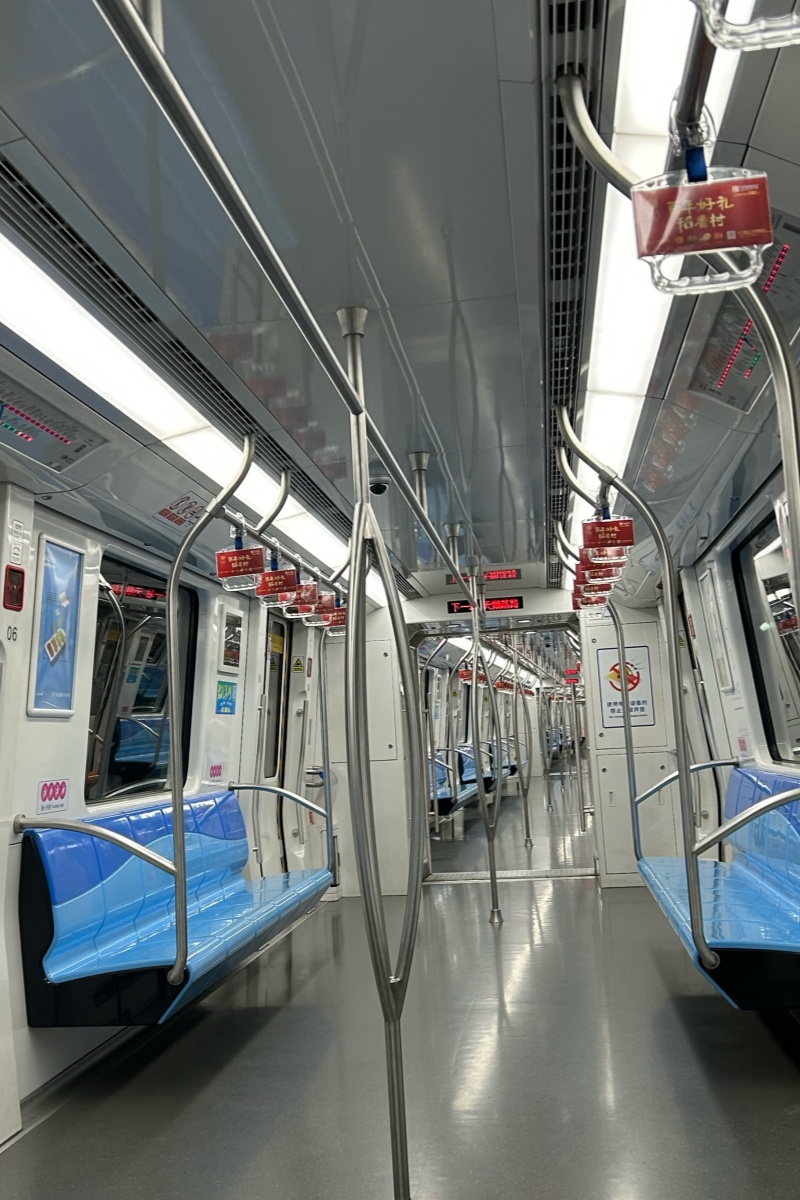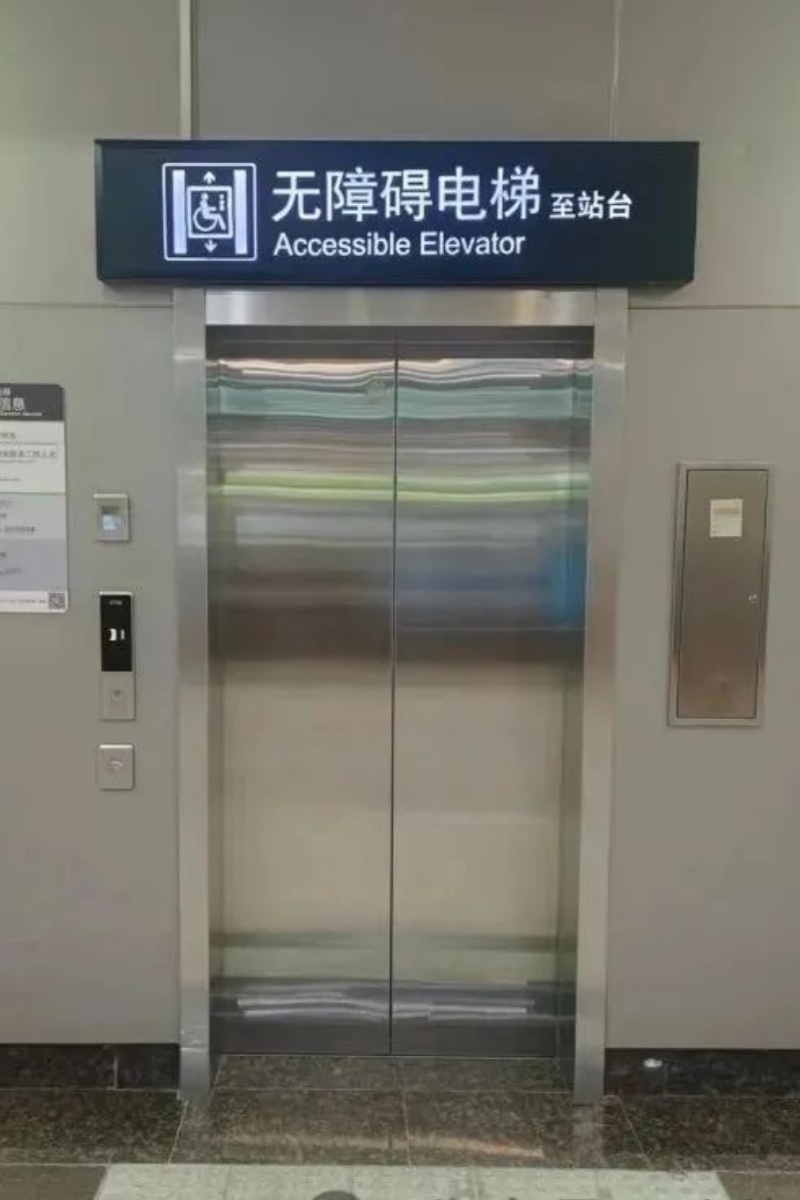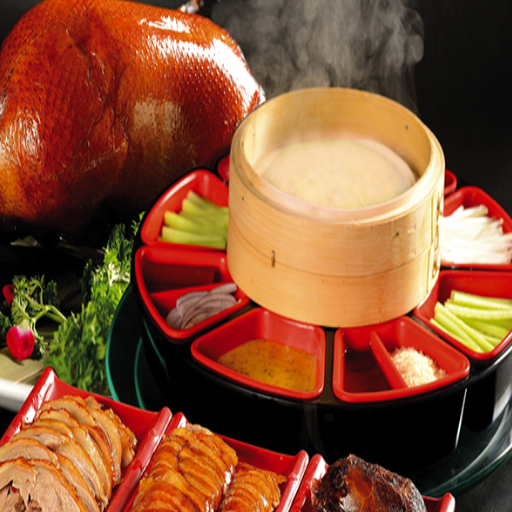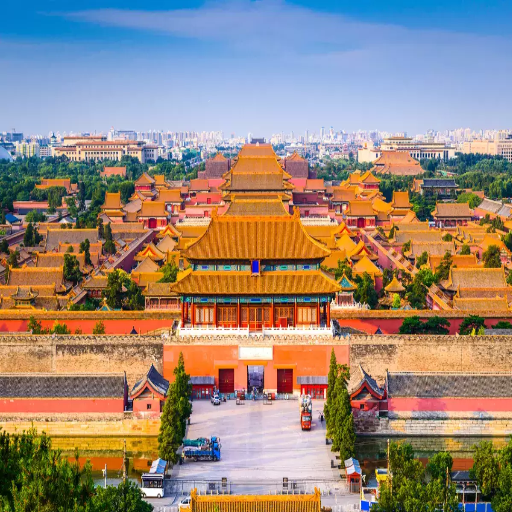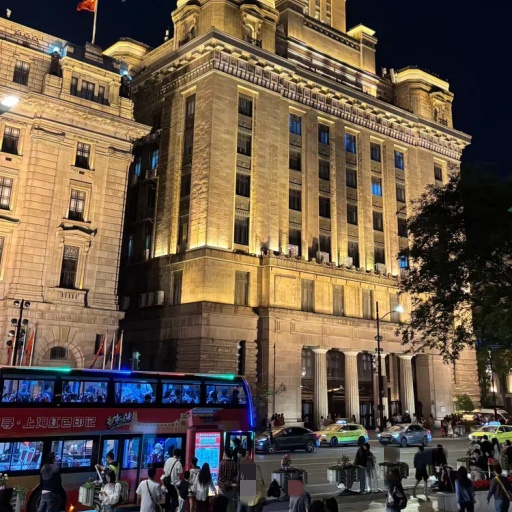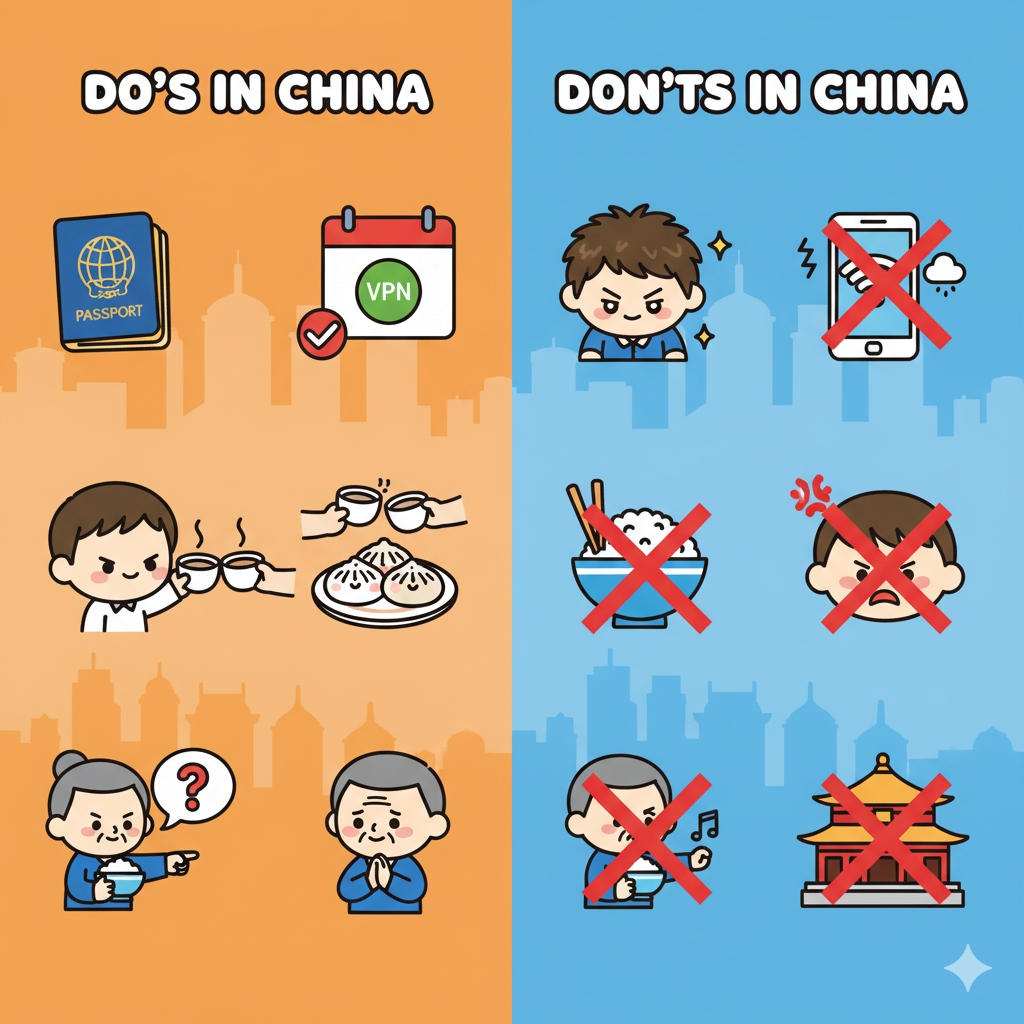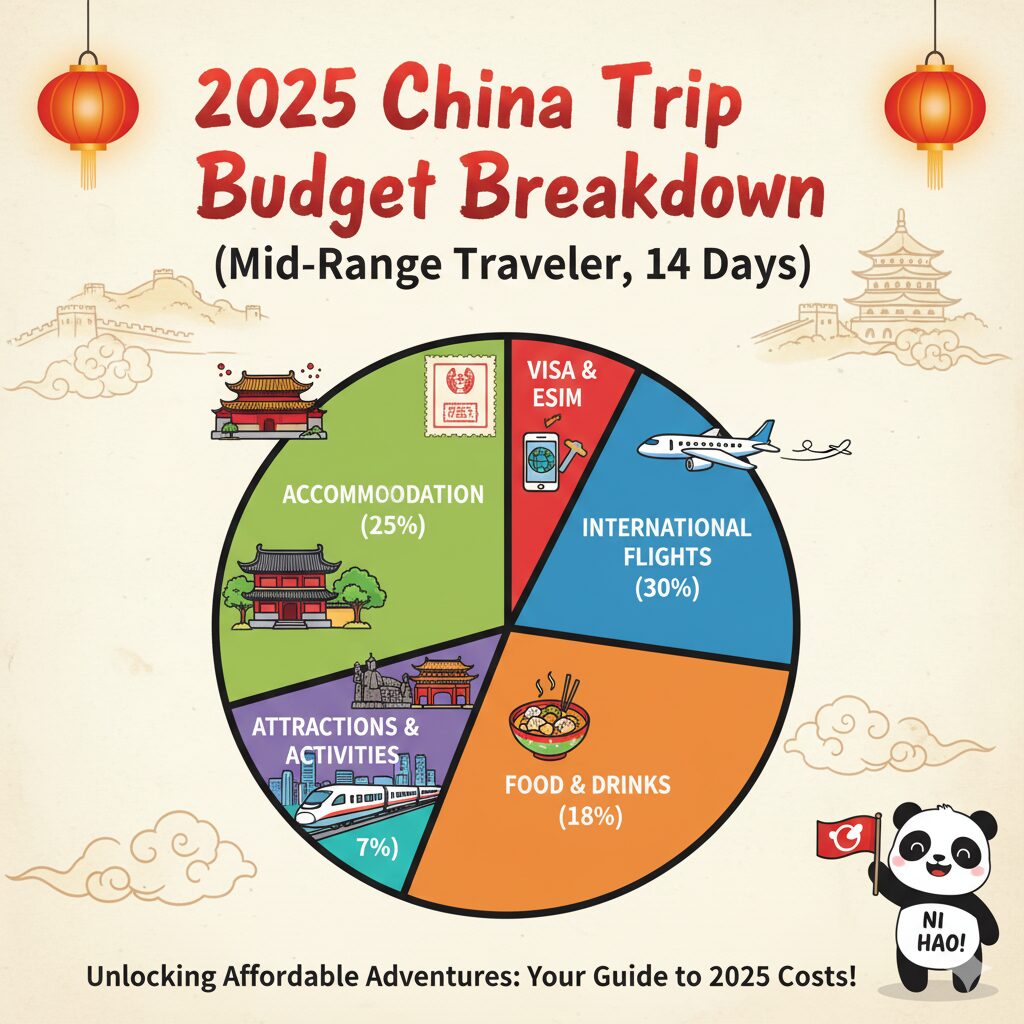
You look at those photos — the hutongs, the skylines, the misty mountains — and start adding up numbers in your head. Is China expensive to visit? Not really. Sure, flights and visas can sting a little, but once you’re here, it’s a different story. I grabbed a steaming bowl of hand-pulled noodles in Beijing for just two bucks — meanwhile, my friend in Tokyo shelled out twelve for ramen. Street food, hostels, high-speed trains — everything feels like a steal. Just don’t get too comfy with the word “cheap.” There are still sneaky costs waiting to ambush you — eSIMs, holiday surges, and those random travel add-ons that hit when you least expect it.
Here’s the real deal — this is what is china expensive to visit means. Here’s the real prices, hidden costs, and a slew of smart hacks that’ll save you a lot more than you think. Visas, dumplings, bullet trains, it’s all here to show you how far your dollar (or euro) can go in China. Now grab your coffee and let’s dig in. Because knowing this stuff before you go can literally save your trip.
Quick Answer: How Much Does a Trip to China Really Cost?
Let me cut straight to the chase. Here's what different travel styles will set you back:
💰 China Travel Cost Summary 2025 (14 Days / 3–4 Cities: Beijing, Xi’an, Shanghai, Guilin as example)
| Category | What’s Included | Budget Traveler | Mid-Range Traveler | Luxury Traveler |
|---|---|---|---|---|
| Accommodation (住) | Hostels / 3-star hotels / 5-star stays | $8–25 / night Simple hostels, local inns | $60–100 / night 3–4★ hotels | $180–300+ / night 5★ & boutique |
| Food (食) | Street food, restaurants, snacks | $12–20 / day baozi, noodles, local cafes | $25–45 / day mix of local & mid-tier | $60–100+ / day fine dining, cocktails |
| Transportation (行) | Metro, Didi, high-speed trains, domestic flights | $220–400 / trip total mostly trains, metro | $300–500 / trip total 1–2 short flights | $600–900 / trip total private transfers, premium trains |
| Attractions (游) | Tickets, tours, guides | $80–150 total DIY sightseeing | $200–350 total guided tours + river cruise | $500–800+ total private guide, VIP access |
| Total for 14 Days | All major expenses combined | $1,000–1,600 USD | $2,000–3,300 USD | $4,500–7,000+ USD |
These numbers don't include your international flights (those run anywhere from $500 to $1,500 depending on where you're flying from). They're based on visiting 3-4 major cities like Beijing, Xi'an, Shanghai, and Guilin, and they factor in visa costs, eSIM, and all the essentials.
Here's something to put it in perspective: China runs about 40-60% cheaper than Japan, 30-50% less than Western Europe, but it'll cost you about 10-20% more than Thailand for similar experiences. You're getting incredible infrastructure—think high-speed trains that feel like business class—at prices that won't make your wallet weep.
Before You Even Book: Pre-Trip Expenses
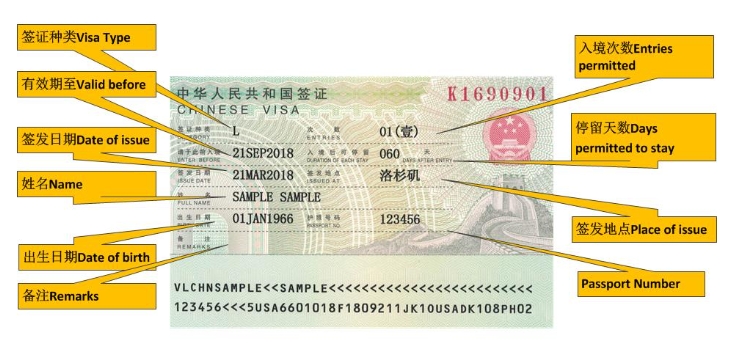
L Visa
China Visa Costs in 2025 (By Nationality)
The visa situation is the first reality check for most travelers. Here's what you're looking at:
| Nationality | Single Entry | Multiple Entry | Processing Time |
|---|---|---|---|
| USA | $140 | $140 | 4-7 business days |
| UK | £64 (~$81) | £64 | 4-7 business days |
| Canada | C$75 (~$56) | C$75 | 4-7 business days |
| Australia | A$30 (~$20) | A$90 | 4-7 business days |
| EU Citizens | €60-125 | €60-125 | 4-7 business days |
Now here's where it gets interesting. If you're from one of 54 countries including the US, UK, or Canada, you can actually skip the visa entirely for short trips. The 144-hour or 240-hour visa-free transit policy is a game-changer. I met a traveler in Shanghai who spent 5 days there completely visa-free by showing his onward ticket to Tokyo. Saved him $140 right there.
The catch? You can only stay within specific city regions, so this works best for quick city breaks or stopovers. But if you're planning the classic Beijing-Xi'an-Shanghai route over two weeks, you'll need that full tourist visa. Knowing the price is step one; choosing the right category comes next in Chinese Visa Types 2025.
Word of warning: Some nationalities like India and Pakistan need invitation letters, which adds another $50-100 to the process. Check your specific requirements at least a month before your trip.
Travel Insurance & eSIM: Hidden Essentials
Insurance is straightforward—budget $50-100 for basic coverage on a 14-day trip, or $100-200 for comprehensive plans. Companies like SafetyWing ($1.50/day) or World Nomads are solid choices.
But let's talk about the eSIM, because this is where most people underestimate. If travel insurance is your backup plan, eSIM is your lifeline — read China eSIM News 2025. In 2025, having internet access in China isn't optional—it's survival. Here's why: VPNs don't work reliably anymore, and without internet, you literally can't pay for anything. No Alipay access means no taxis, no restaurants, no nothing. Trust me, I watched tourists struggle at metro stations because they couldn't access payment apps.
| Provider | Data | Duration | Price | Network |
|---|---|---|---|---|
| Airalo | 5GB | 7 days | $16.50 | China Mobile |
| AloSim | 5GB | 7 days | $16.50 | China Unicom |
| Saily | 10GB | 15 days | $28.99 | China Telecom |
Here's a hard-earned tip: Buy at least double the data you think you need. If you run out while you're in China, you're stuck—the apps are blocked, so you can't top up. I made this mistake in Guilin and had to hunt down a 7-Eleven to buy a physical SIM card. Not fun.
Pre-Trip Total: Expect to spend $206-390 on visa, insurance, and eSIM before you even board your flight.
Getting to China: Flight Costs from Around the World
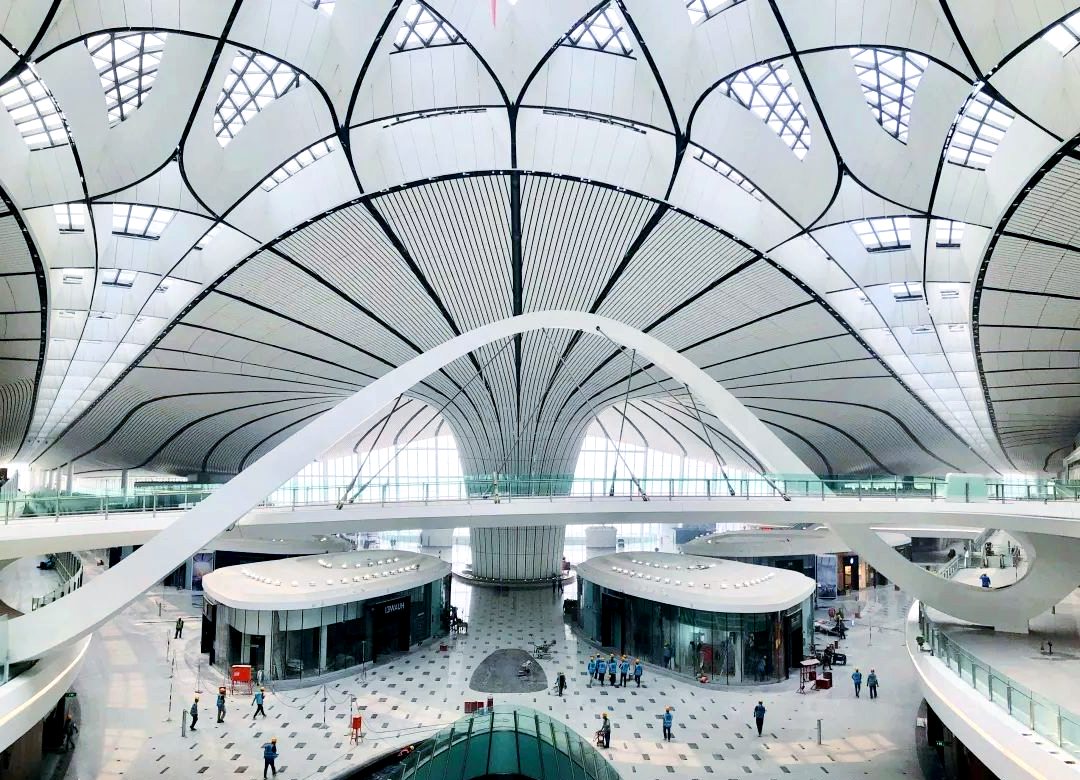
Beijing Daxing International Airport
Flight prices to China have actually improved post-pandemic, but timing is everything. Here's what you're realistically looking at for round-trip tickets:
| Departure Region | Budget Range | Standard Range | Best Booking Window |
|---|---|---|---|
| USA (LAX/JFK) | $600-900 | $800-1,200 | 2-3 months advance |
| Europe (LHR/CDG) | $500-800 | $700-1,100 | 2-3 months advance |
| Southeast Asia (BKK/SIN) | $150-300 | $250-450 | 1-2 months advance |
| Middle East (DXB) | $400-700 | $600-900 | 1.5-2.5 months advance |
| Australia (SYD) | $500-800 | $700-1,000 | 2-3 months advance |
| Nigeria (LOS) | $800-1,200 | $1,000-1,500 | 3+ months advance |
I've found a hack that works surprisingly well: fly into Hong Kong first, then take the train to mainland China. For some routes, this saves $200-400. The high-speed rail from Hong Kong to Guangzhou or Shenzhen is comfortable, quick, and gives you a smoother entry experience.
Another money-saver? Book your domestic Chinese flights separately on Trip.com instead of as a connection through your international carrier. I found Shanghai to Guilin flights for $98 on Trip.com when the connection through my international ticket wanted to charge me $180.
Critical timing note: Avoid Chinese New Year (late January to February) and Golden Week (October 1-7) like the plague. Prices literally double. I learned this the hard way—found NYC to Shanghai for $650 in April, but the same route during Chinese New Year was $1,400.
Accommodation in China: From $8 Hostels to $300 Luxury Stays
What Your Money Actually Gets You
Here's where China becomes seriously interesting. The range of accommodation is enormous, and the value-to-price ratio often beats what you'd find in Western countries.
Budget tier ($8-25/night) is where backpackers thrive. Hostel dorm beds run $8-15, while private rooms in the same hostels go for $20-25. I stayed at Beijing Downtown Backpackers for $12 a night—got a dorm bed with AC, lockers, breakfast, and a rooftop with views of the Forbidden City. Not bad at all. Chinese budget hotel chains like 7 Days Inn offer clean, no-frills private rooms for $25-35.
Mid-range ($50-100/night) is where most travelers find their sweet spot. For $50-70, you're looking at solid 3-star Chinese hotels with comfortable beds, clean bathrooms, and usually breakfast. Bump it up to $70-100 and you'll get 4-star properties that in Western countries would easily cost $150+. The Dasein Youlan Hotel in Beijing's hutong area runs about $110 and comes with a gorgeous courtyard garden—the kind of place that shows up on Instagram feeds constantly.
Luxury tier ($150-300+) doesn't offer the same dramatic savings. International 5-star chains like Park Hyatt or Ritz-Carlton in Shanghai or Beijing will still run you $200-350, which is only 20-30% less than in major Western cities. Heritage hotels and boutique properties in places like Yangshuo offer better value at $120-200, giving you unique experiences without the international brand premium.
After checking China’s price range, find out which platform actually saves you more in Trip vs Booking vs Agoda — Best Way to Book China Hotels.
City-by-City Reality Check
Not all Chinese cities cost the same. Shanghai and Beijing are the priciest, while places like Xi'an and Chengdu offer better bang for your buck:
| City | Budget | Mid-Range | Luxury |
|---|---|---|---|
| Beijing | $10-25 | $70-120 | $180-300 |
| Shanghai | $12-28 | $80-130 | $200-350 |
| Xi'an | $8-20 | $45-80 | $120-200 |
| Guilin/Yangshuo | $10-22 | $60-100 | $150-250 |
| Chengdu | $9-22 | $50-90 | $130-220 |
Here's a mistake I see constantly: people booking Western chain hotels (Hilton, Marriott, Sheraton) thinking they'll be cheaper in China. They're not. These properties often cost 50-100% more than equivalent Chinese hotels. Even worse, using Booking.com instead of Trip.com can inflate prices by 20-30%. I tested this across five cities—same hotels, Trip.com was consistently cheaper.
For a 14-night stay, expect to budget: Budget travelers $112-350 total, mid-range $700-1,400, luxury $2,100-4,200.
Transportation: The Surprisingly Cheap Part of China Cost
- Interior of the Metro Train
- Exterior of the Metro Train
- Accessibile Elevator
Getting Around Cities
This is where China shines. City transportation is absurdly affordable compared to Western countries. Beijing's metro system lets you cross 32 kilometers for about 80 cents. In London, the same distance costs $5 or more.
Metro rides typically run $0.30-1.50 depending on distance. Day passes exist (Shanghai charges $2.50 for unlimited rides), but honestly, individual rides are so cheap that buying passes barely makes sense unless you're doing 5+ trips daily. The metro systems in major cities are modern, clean, and have English signage, making them tourist-friendly. Cheap, fast, and everywhere — get all the details in China Metro Guide 2025.
Taxis start at about $1.95 for the first 3 km, then add $0.30-0.50 per kilometer. A ride from Beijing airport to the city center (about 35 km) runs $18-25. Compare that to most Western cities where airport transfers easily hit $50-80.
But here's the real game-changer: Didi, China's version of Uber. The app has an English interface, accepts foreign cards through Alipay, and usually runs 10-20% cheaper than regular taxis. I used it constantly—a ride from my Beijing hutong hotel to the Forbidden City was $3-5. Just make sure you have Alipay set up before arriving, because the app won't work without it.
Pro tip on transportation cards: Some cities offer them with 5-20% discounts on metro and bus rides. But when each ride costs less than a dollar anyway, I found it barely worth the hassle of buying and returning the card.
Between Cities: High-Speed Trains vs Flights
China's high-speed rail network is legitimately one of the best things about traveling there. The trains are punctual, comfortable, and often make more sense than flying when you factor in airport hassle.
| Route | Distance | 2nd Class Train | 1st Class | Duration | Flight |
|---|---|---|---|---|---|
| Beijing→Shanghai | 1,318 km | $80 | $135 | 4.5-5.5h | $110-180 |
| Beijing→Xi'an | 1,216 km | $70 | $115 | 4.5-6h | $100-160 |
| Shanghai→Guilin | 1,648 km | $120 | $190 | 10-11h | $110-150 |
| Guangzhou→Shenzhen | 147 km | $12 | $19 | 1h | $60-90 |
I took the Beijing to Xi'an bullet train and it was one of my favorite travel experiences. For $70, I got business-class-level seats with power outlets, clean bathrooms, and smooth riding. The flight was only $30 cheaper but required getting to the airport 2 hours early, dealing with security, baggage claim, and then getting from Xi'an airport into the city. The train left from downtown Beijing and arrived in downtown Xi'an. Total no-brainer.
My rule of thumb: Choose trains if the journey is under 5-6 hours. Beyond that, flights start making sense if you find decent fares. Book trains 20-30 days in advance for up to 20% discounts, and avoid weekends when possible—prices can jump 15%.
One money-saving strategy I discovered: overnight trains on longer routes save you a night's accommodation. A soft sleeper berth might cost $50-80 more than a seat, but you're also saving $50-100 on a hotel room.
Fair warning about peak seasons: Train tickets during Chinese New Year and Golden Week sell out weeks ahead. Book 60+ days early or you'll end up paying scalpers double.
Transportation budget for 14 days across 3-4 cities: Within cities $20-50, between cities $200-350, for a total of about $220-400.
Food & Dining: Where China Becomes Ridiculously Cheap
- Peking Duck
- Lao Matou Hotpot
- Chinese-style BBQ
What Your Dollars Actually Buy
Let me break down what different price points get you, because this is where China really delivers value — and where you’ll see that is China expensive to visit is actually the wrong question to ask.
The $1-3 tier is street food and breakfast territory. For $2, I got five hot pork baozi from a cart vendor near my hutong hotel—enough to fuel me until lunch. Hand-pulled noodles from a small shop run $1.50-2.50 and are absolutely delicious. The breakfast combo of soy milk and youtiao (fried dough sticks) costs under $1.20. This isn't just budget eating—it's genuinely good food.
The $5-10 tier covers local restaurants. For $5-7, you can get a rice bowl with two dishes at a neighborhood spot. Lanzhou beef noodles—thick, hand-pulled noodles in rich broth—run $3-5. Want dumplings? $8-12 gets you a feast of 30 pieces with multiple fillings. I had some of my best meals in this price range, eating at places where locals lined up.
The $15-30 tier is where you start experiencing China's famous dishes properly. Peking duck for 2-3 people runs $25-40. Hotpot meals per person go for $15-25. A full dim sum spread for a table costs $18-28. Sichuan restaurant meals fall in the $12-20 range. These aren't tourist traps—these are proper, authentic meals at good restaurants.
The $50+ tier is fine dining—Michelin-starred restaurants, high-end international cuisine, hotel restaurants. Unless you're specifically seeking this out, you can eat incredibly well without ever hitting this level.
Cheap bites are fun, but the real flavor story starts here — Your Guide to an Unforgettable Beijing Food.
The City-by-City Reality
Food costs do vary by city. Shanghai and Beijing command premiums, while Xi'an and Chengdu offer better value:
| Meal Type | Beijing | Shanghai | Xi'an | Chengdu |
|---|---|---|---|---|
| Street Breakfast | $2-3 | $2.50-4 | $1.50-2.50 | $1.80-3 |
| Cheap Lunch | $4-7 | $5-8 | $3-6 | $4-7 |
| Mid-Range Dinner | $15-25 | $18-30 | $12-20 | $13-22 |
| Coffee (Starbucks) | $5-7 | $5-7 | $4.50-6 | $4.50-6 |
Notice that Starbucks costs basically the same as in Western countries? That's the "Western comfort tax" I'll talk about later. But local cafes serve perfectly good coffee for $2-4.
Tourist trap alert: Restaurants near major attractions like the Forbidden City or Shanghai Bund charge 3-5x normal prices. I saw $20 noodles near the Forbidden City when the same bowl costs $3 just a few blocks away. Theme parks and scenic areas are even worse—budget $15-25 per meal if you're eating inside.
My secret weapon was the Dianping app (China's Yelp). It helped me find where locals actually eat. Found a incredible Sichuan restaurant just two blocks from a touristy street—paid $8 for a feast that would've cost $25 near the attractions.
Daily food budget: Budget travelers $12-20, mid-range $25-45, luxury $60-100+. For 14 days total: Budget $168-280, mid-range $350-630, luxury $840-1,400+.
Attractions & Activities: Surprisingly Affordable Culture
- Great Wall
- Forbidden City
- The Bund
What the Famous Sites Actually Cost
Here's some good news: most of China's incredible historical sites won't drain your wallet. Entry fees are reasonable, especially compared to attractions in Western countries.
| City | Attraction | Price (USD) |
|---|---|---|
| Beijing | Great Wall (Mutianyu), Forbidden City, Summer Palace, Temple of Heaven, Tiananmen Square, Lama Temple | $3.5–10 (Most free or low-cost) |
| Xi’an | Terracotta Warriors, City Wall, Muslim Quarter, Bell & Drum Towers | $4–17 (Some free) |
| Shanghai | Yu Garden, Bund, French Concession, Shanghai Tower | Free–$25 |
| Chengdu | Panda Base | $7.70 |
| Zhangjiajie | Avatar Mountains | $31.50 |
| Guilin | Li River Cruise | $28–45 |
| Hangzhou | West Lake | Free |
If $100 a day covers travel and food, here’s what’s left for souvenirs — Things to Buy in China 2025.
The Hidden Costs at Attractions
Here's where things get tricky. The entry ticket is just the start. At the Great Wall, I bought a basic $7 ticket and then realized the climb was brutal. Ended up needing the cable car—$14 up, $19.50 down. My $7 ticket suddenly became $40.50.
Audio guides add $7-14 (worthwhile at the Terracotta Warriors, skippable elsewhere). Photography fees exist at some sites for "professional cameras," whatever that means. And watch out for touts selling "VIP fast-pass" tickets at triple the price—usually scams.
Money-saving tips: Many museums offer free entry on certain days (check official websites in advance). Parks are always free—you only pay for temple buildings inside them. Student IDs often score 50% discounts if you have a valid international student card. Book combo tickets online for 10% off packages like Great Wall plus Ming Tombs.
Activities budget for 14 days: Budget approach (skip some sites, DIY tours) $80-150, mid-range (most major sites plus some guided tours) $200-350, luxury (everything plus private guides) $500-800+.
The Hidden Costs Nobody Warns You About
Peak Season Price Explosions
I mentioned this earlier but it deserves its own section because the difference is shocking. During regular season versus peak season, you're looking at completely different price structures:
| Season | Accommodation | Domestic Flights | Trains | Overall Cost |
|---|---|---|---|---|
| Chinese New Year (Jan-Feb) | +150-250% | +80-150% | +50-100% | 2-3x normal |
| Golden Week (Oct 1-7) | +120-200% | +60-120% | +40-80% | 2-2.5x normal |
| Summer (Jul-Aug) | +40-80% | +30-60% | +20-40% | 1.5-2x normal |
| Shoulder (Apr-May, Sep-Oct) | Normal | Normal | Normal | 1x (BEST) |
| Winter Low (Nov-Feb, except CNY) | -20-40% | -15-30% | Normal | 0.7x (CHEAPEST) |
I made the mistake of visiting during Golden Week once. My Shanghai hotel jumped from $70 to $180 per night. Train tickets were sold out. At the Forbidden City, I waited in line for 3 hours. It was miserable. The shoulder seasons (April-May and September-October) are absolute sweet spots—pleasant weather, normal prices, manageable crowds.
In-Attraction Price Markups
Inside tourist attractions, everything costs 2-4x normal prices. Bottled water goes from $0.40 outside to $1.50-2 inside. Instant noodles jump from $0.80 to $3-4. Meals that cost $6-10 nearby suddenly become $15-25 inside the attraction. Snacks and souvenirs carry 200-300% markups.
The solution? Carry a refillable water bottle and snacks in your daypack. I saved $10-15 daily doing this at places like the Great Wall and Zhangjiajie.
Tourist Scams to Watch For
Let me save you some headaches. The most common scams:
The "art student" scam in Beijing and Shanghai: Friendly English-speaking students invite you to a tea ceremony or art exhibition. The bill comes to $300-500. Just politely decline all unsolicited invitations from strangers.
Taxi meter "broken" at airports and train stations: Driver quotes a flat rate that's 3-5x the actual fare. Solution: Use Didi app or insist the meter runs before getting in.
Fake monks at major temples: They give you a bracelet, then demand $50+ donation. Real monks never approach tourists for money.
Restaurant "special menu" for foreigners: Prices are 50-100% higher than the Chinese menu. Always ask to see prices before ordering, use Google Translate on the Chinese menu.
Pattern to remember: If someone approaches YOU, be suspicious. If there's no written price, walk away.
China vs Other Destinations: The Value Comparison
What $100 Per Day Actually Gets You
Many travelers still debate is China expensive to visit compared to places like Thailand or Japan, but the truth depends on what kind of comfort you’re after. This is where you see China's real value proposition:
| Destination | Accommodation | Meals | Transport | Attractions | What You Get |
|---|---|---|---|---|---|
| China | 4-star hotel | Street to mid-range | Unlimited metro + taxi | 3-4 major sites | High comfort |
| Japan | 3-star hotel | 2 cheap meals | Metro only | 1-2 sites | Tight budget |
| Thailand | Boutique hotel | All meals + cocktails | Taxi freedom | 2-3 sites | Party lifestyle |
| Western Europe | Budget hotel | Fast food mainly | Limited metro | 1 site | Survival mode |
| USA (NYC) | Hostel dorm | 2 meals | Subway only | Maybe 1 site | Struggle |
In Shanghai, my 4-star hotel included an incredible breakfast buffet—unlimited dumplings, noodles, fresh juice, eggs, all included. A similar-tier hotel in London charged £18 ($23) extra for a basic continental breakfast. That kind of value difference adds up quickly.
China vs Thailand: Direct Comparison
Since many people ask about this, here's the breakdown:
| Category | China | Thailand | Winner |
|---|---|---|---|
| Budget Hotels | $12-25 | $8-20 | 🇹🇭 Thailand |
| Mid-Range Hotels | $60-100 | $40-80 | 🇹🇭 Thailand |
| Street Food | $2-5 | $1.50-4 | 🇹🇭 Thailand (slight) |
| Restaurants | $8-20 | $5-15 | 🇹🇭 Thailand |
| Local Transport | $0.30-1.50 | $0.50-2 | 🇨🇳 China |
| Long Distance | $10-120 | $5-50 | 🇨🇳 China (better quality) |
| Attractions | $5-30 | $0-20 | 🇹🇭 Thailand |
| Overall Daily | $60-180 | $40-150 | 🇹🇭 Thailand (10-20% cheaper) |
The verdict: Thailand wins on pure cheapness, but China offers dramatically better infrastructure. Those high-speed trains, modern metro systems, and well-maintained historical sites give you more "wow" per dollar. If you want beach parties on a shoestring, Thailand. If you want cultural depth with modern conveniences, China delivers better value.
Real Budget Breakdowns: 3 Traveler Case Studies
Backpacker Emily: 10 Days, $620 Total
Emily did the classic Beijing (3 days) → Xi'an (3 days) → Shanghai (4 days) route on a tight budget. Here's how:
Daily breakdown example: Day 1 in Beijing cost $40 total—$12 hostel dorm, $15 food (street breakfast, cheap lunch), $5 metro/bus, $8 Forbidden City ticket. Her most expensive day was Day 2 with the Great Wall: $12 hostel, $18 food (shared hotpot), $8 transport, $21 for Great Wall entry and cable car, totaling $59.
Her strategy? Hostels with kitchens where she could cook instant noodles for lunch ($1), buying baozi for breakfast ($2), then splurging on dinner ($10-15). She walked a lot instead of taking metro constantly. Used free museum days. Joined free walking tours in each city and tipped $5-10.
Final tally: Accommodation $151, food $196, transport $137 (including long-distance trains), activities $54, plus $82 buffer for unexpected costs = $620 total.
Emily's advice: "The key was mixing ultra-budget choices (cooking some meals, walking) with strategic splurges (Great Wall cable car, one nice hotpot meal). I never felt deprived."
Couple Mark & Lisa: 14 Days, $3,800 Total
Mark and Lisa took the Beijing (4 days) → Xi'an (3 days) → Guilin/Yangshuo (4 days) → Shanghai (3 days) route, staying in 3-4 star hotels and eating well.
Budget summary: Accommodation $1,120 for 14 nights ($70-90/night range), food $840 total (included two nice dinners at $40-60 each, rest mid-range), long-distance transport $480 (trains plus one flight), local transport $168, activities and tours $680 (all major sites plus Li River cruise), shopping and misc $280, plus pre-trip costs of $520 (visas, insurance, eSIM for two people).
Total: $4,088 or about $1,900 per person.
Their insight: "We're not backpackers but not luxury either. Found great mid-tier hotels on Trip.com for 30% less than Booking.com. Splurged on Peking duck ($35) and Li River cruise ($80)—zero regrets. Those became our favorite memories."
Luxury Traveler David: 7 Days, $4,200 Solo
David did just Beijing (3 days) and Shanghai (4 days), moving slowly and staying in top properties.
Breakdown: 5-star hotels $1,750 total ($210-280/night), fine dining $960 ($120-150 daily), private driver and guide $840 (for 4 days total), VIP activities $330, miscellaneous (shopping, spa, cocktails) $320.
Grand total: $4,200 for one week, not including international flight.
David's philosophy: "I work 60-hour weeks. On vacation, I want zero stress. The private guide meant no queues at the Forbidden City—entered through the staff entrance. Park Hyatt Shanghai room overlooked the Bund. Worth every dollar for a perfect week."
Money-Saving Strategies That Actually Work
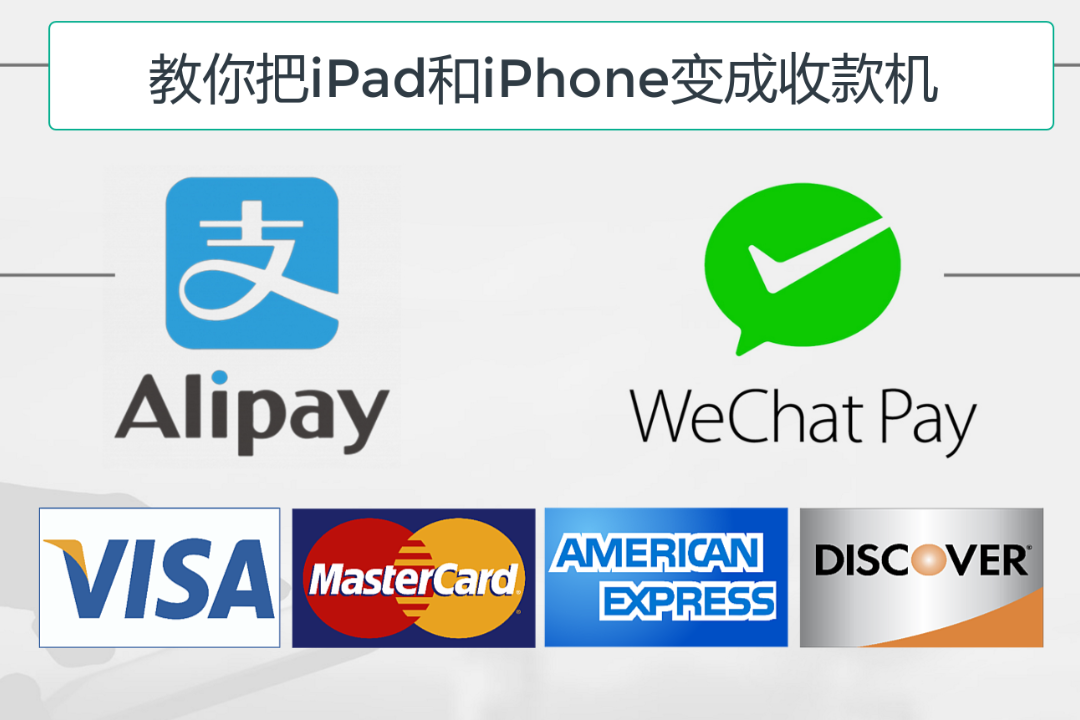
Alipay and WeChat Pay
If you’ve ever asked yourself is China expensive to visit, the real secret lies in timing, apps, and local know-how.
The Alipay Foreign Card Setup
This is absolutely critical and somehow half the travel guides skip it. In 2025, China runs on mobile payments. Setting up Alipay before your trip is non-negotiable.
Download the Alipay app before departure. Go to "Me" → "Bank Cards" → tap "+" → select "Add International Card" → enter your Visa or Mastercard details → verify with SMS. Takes literally 2 minutes. Most major banks are now supported.
Why this matters: Once I had Alipay working, my costs dropped 15%. I ordered $8 dinners on Meituan with free delivery, used $0.15 bike shares, paid exact taxi fares. No more "I don't have change" scams.
Without Alipay, many places won't accept cash anymore. You're fighting with one hand tied behind your back.
The Chinese Platform Booking Strategy
I tested this across multiple cities and the savings are consistent:
| Service | Western Platform | Chinese Platform | You Save |
|---|---|---|---|
| 4-star Beijing Hotel | Booking.com: $95 | Trip.com: $68 | $27 (28%) |
| Beijing-Xi'an Train | Third-party: $85 | 12306.cn: $70 | $15 (18%) |
| Shanghai-Guilin Flight | Skyscanner: $135 | Trip.com: $98 | $37 (27%) |
Chinese platforms don't have middleman markups. They have local partnerships and frequent flash sales. Check Trip.com daily for deals. The customer service is hit-or-miss in English, but for 20-30% savings, I'll manage.
The Shoulder Season + Weekday Formula
Timing is everything. Spring shoulder season (April-May) or fall shoulder season (September and late October-November) offer the best value:
| Window | Flight (US-China) | Hotel/Night | Overall Value |
|---|---|---|---|
| Spring Shoulder (Apr-May) | $700-1,000 | $60-90 | ✅ IDEAL |
| Fall Shoulder (Sep, late Oct-Nov) | $650-950 | $55-85 | ✅ BEST VALUE |
| Winter Low (Dec-mid Jan) | $600-850 | $50-75 | ✅ CHEAPEST (cold) |
| Chinese New Year | $1,400-2,000 | $120-180 | ❌ AVOID |
Add the weekday trick: Tuesday-Thursday hotels are 10-15% cheaper than Friday-Sunday. Trains on weekdays have better availability. Attractions are 50% less crowded.
Real example: Same 10-day trip in July with weekend-heavy itinerary cost $1,950. Rescheduled to May with Tuesday-Thursday bookings cost $1,380. Saved $570 with identical itinerary.
The Eat Like a Local App Stack
Download Dianping (大众点评), China's Yelp. Search your neighborhood, sort by rating, look for 4.5+ stars with 500+ reviews. This helps you find authentic $8 meals instead of paying $25 at tourist traps two blocks away.
Also get Meituan (美团) and Eleme (饿了么) for food delivery. Both apps offer new-user coupons worth $5-8 off orders. I found a trick: alternate between apps with different email addresses for constant new-user deals. Saved $40 over two weeks on deliveries. The local app stack helps you find food; this one gets it to your door — Food Delivery Apps in China.
When China Actually Gets Expensive
The Western Comfort Tax
Craving Western products? Prepare to pay:
| Western Item | China | Home Equivalent | Markup |
|---|---|---|---|
| Starbucks | $5-7 | $4-6 | No savings |
| Imported Wine | $25-60 | $12-25 | 100-150% |
| Cheese | $8-15 | $4-6 | 100-150% |
| Imported Shampoo | $12-20 | $5-8 | 100% |
I spent $18 on imported cereal in Shanghai before realizing Chinese breakfast (baozi and soy milk) was $2 and way more filling. Embrace local alternatives or budget extra for Western comforts.
The Luxury Hotel Trap
Surprisingly, luxury hotels in China aren't dramatically cheaper than the West. Park Hyatt Beijing runs $300-450 versus $400-600 in the US—only 20-30% savings. Better strategy: stay at top Chinese 5-star brands like Jinjiang or Shangri-La Asian properties at $150-250 for equivalent quality.
The Solo Travel Penalty
Traveling alone doubles certain costs. Hotel rooms are priced per room, not per person, so you pay the full $70-100. Private tours cost $120 whether for one person or two. Taxi to the Great Wall is $80 round-trip regardless of passengers.
Workarounds: Stay in hostel dorms (no single supplement), join small-group tours booked at hostels, or use Couchsurfing and travel buddy apps to find day-trip partners.
FAQs: Your China Budget Questions Answered — is China expensive to visit?
Q: Is it hard for US citizens to visit China in 2025?
Not anymore, and that’s part of why people keep asking is China expensive to visit. The 144/240-hour visa-free transit makes short stays easy. Full tourist visas now need fewer documents (way simpler than before 2024). You can use foreign cards on Alipay or WeChat Pay, and English signage is growing. A full visa still costs $140, but overall, it’s easier and cheaper than people expect.
Q: What can $1 actually get you in China?
If you’ve wondered is China expensive to visit, here’s the fun part—$1 buys a lot. You can grab 2-3 baozi, one metro ride, or even a bus trip with change left. While coffee or fancy meals are out of reach, small everyday things feel like bargains. In daily terms, $1 in China equals $3–5 worth of spending power compared to the US.
Q: Is $5 a lot of money in China?
When debating is China expensive to visit, $5 feels moderate. It covers a full breakfast combo, a local lunch, or multiple metro rides. Locals often spend $3–6 for lunch, so tourists can eat well at $5. For smaller attractions, this gets you a full day of light sightseeing and snacks too.
Q: How much does a typical meal cost?
You can judge is China expensive to visit by its food prices—most travelers say no. Street breakfast costs $1.50–3, casual lunch $4–8, decent dinner $8–15. Even with comfort dining, $20–35 a day covers three meals easily. That’s solid value compared to Western cities.
Q: Is China expensive for shopping?
People compare this a lot when asking is China expensive to visit. Local brands and markets are 30–50% cheaper. You can haggle big discounts, or get a custom suit for $200–400 instead of $800+ abroad. Imported goods cost the same or more, but local products—tea, silk, ceramics—are great bargains.
Q: How much should I bring for 2 weeks?
Budget travelers checking is China expensive to visit can relax—$900–1,300 total works. Mid-range comfort needs $1,600–2,800, luxury $3,200+. Add flights and visa separately. Most spend around $2,000 total for two comfortable weeks, using Alipay for most payments.
Q: Is China cheaper than Thailand?
The is China expensive to visit question comes up in every Asia debate. Thailand’s about 10–20% cheaper, but China offers better infrastructure and transport. Food and hostels are pricier, but trains, metros, and museums give top value. So China isn’t the cheapest—but you get more for what you spend.
Q: Can I travel China on $50 per day?
Absolutely—and this often settles the is China expensive to visit argument. $50/day covers hostels, meals, attractions, and transport if you plan well. Hostels cost around $12, food $18, local travel $8, leaving enough for sights. For most travelers, $60–70 daily feels more flexible.
Q: Is Shanghai more expensive than Beijing?
Even when comparing cities, people ask is China expensive to visit. Shanghai’s about 10–15% pricier—mid-range hotels $80–120, Beijing’s $70–100. Meals and taxis cost a bit more in Shanghai, but free sights like the Bund balance it out. Add 10–15% to your daily budget if you’re staying there.
Q: Do I need cash or can I use cards?
You might think is China expensive to visit because of payment hassles, but nope. Cashless is normal now—just link your Visa/Mastercard to Alipay. Keep $100–200 RMB for backup. Without Alipay, yes, it’s tricky—but costs themselves stay low. Most tourists say China’s convenient and still budget-friendly.
